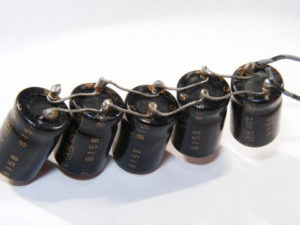CAPACITOR BASICS
A capacitor operates by saving energy then releasing that energy. This guide will outline the performance of this parallel plate capacitor. The space between the plates might differ from nanometers. The plates could be square, round or cylindrical, or other form. The medium between the plates may be vacuum, air another material. The material between the plates will be known as the medium. The quantity of cost or Capacitance changes with the permittivity of the boundary between the plates, the space between the plates, and also the region of these plates. Capacitance raises with permittivity and plate region. It reduces with distance of these plates.
HOW THEY WORK
Charge begins to develop on the capacitor plate after the electricity or battery source from the capacitor circuit is switched . After the capacitance has been attained no charge will be accepted by the plate. The fee is going to be kept on the plate. The charge from the capacitor will start to release its energy when the electricity is switched off.
The energy that is saved will continue to stream round the plates, and then down the circuit needing electricity.
Whether the change is started, it will recharge. This cycle can repeat itself hundreds, tens of thousands of times. That’s the fantastic part about capacitors. There are not any moving parts. They last quite a while.
They’ve a few practical limitations even though capacitors are excellent at keeping and releasing fee on cue. To begin with, it is not possible for them to store charge and they have reduced power density. As state lithium ion batteries, they can’t hold just as much energy. Research is continuing to enhance both constraints.
How are vehicles helped by capacitors?
Because capacitors can take energy at a speed that was quick and batteries require a very long time to control, they’re ideal for storage of energy.
Not only capacitors are important but high voltage resistors as well for control. Take vehicles — As a converter, their board alternator can be utilized as hybrids brake. Since the brakes are applied, the generator leads to recharging the batteries and capacitors in precisely the exact same moment and slowing the vehicle. Some cab drivers by way of instance have reported that a ton less brake wear as a result of using regenerative braking. Electric vehicles such as the Nissan Leaf possess regenerative braking.
It seems possible that capacitors known as ultracaps or ultracapacitors can replace batteries.
Ultracaps can be billed. Ultracaps now won’t hold energy for extended, and cannot be relied upon for long-term storage such as batteries. Research is continuing. Banks of ultracaps have seen use in certain city buses.
In China, 5 kilometers between charges could travel about. The buses link in bus stops to power lines. Considering that the bus should earn passenger stops since they’re stopped, their capacitor banks control.




